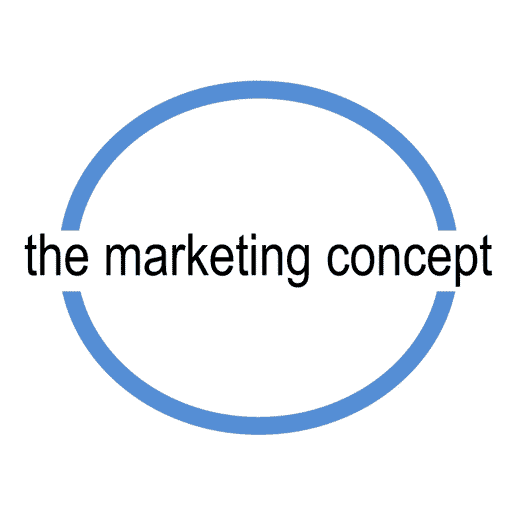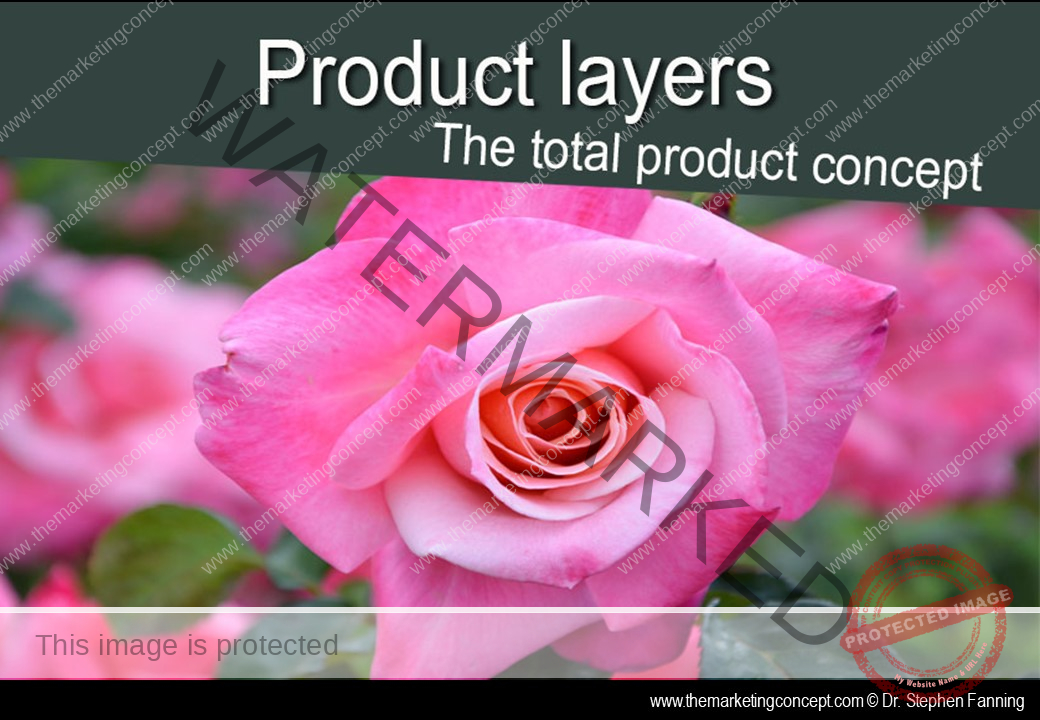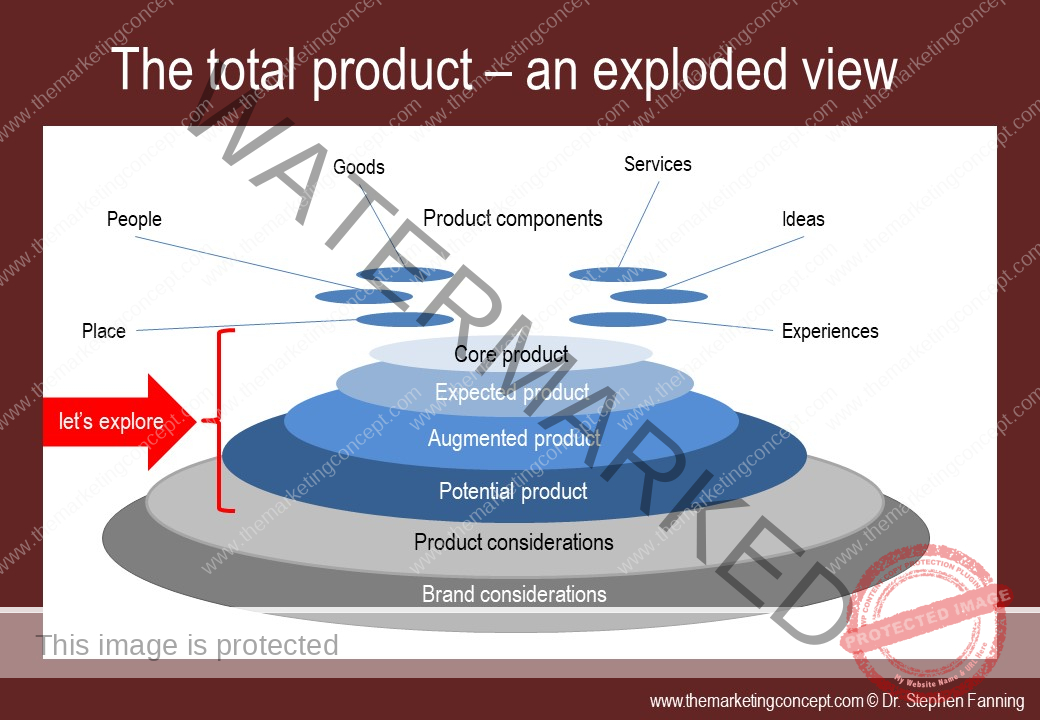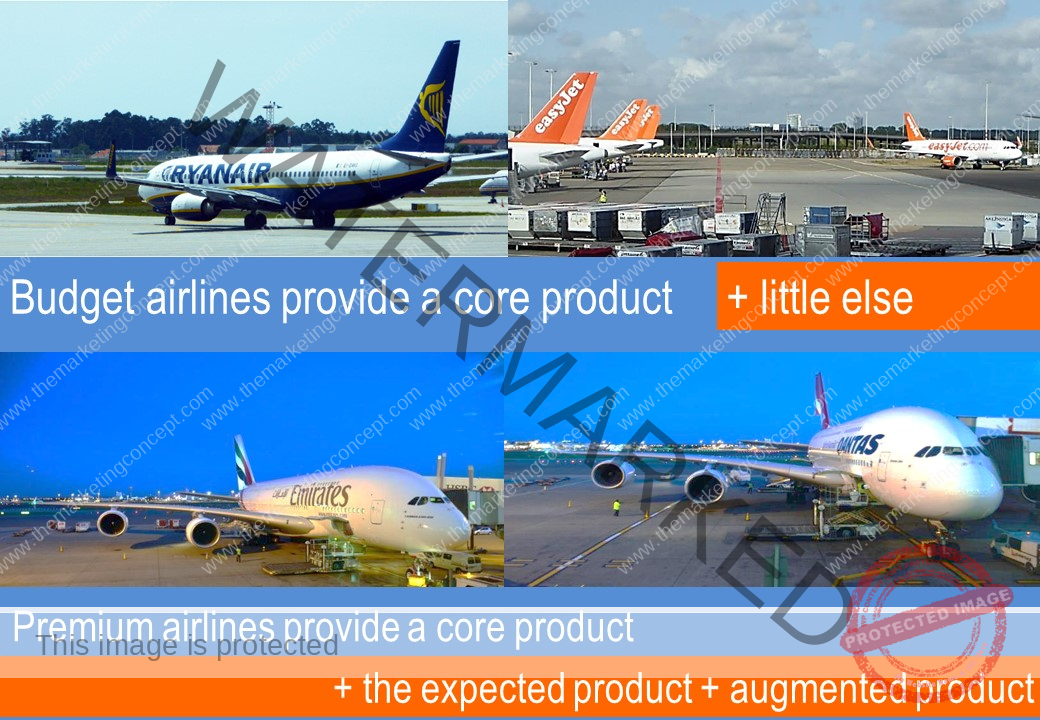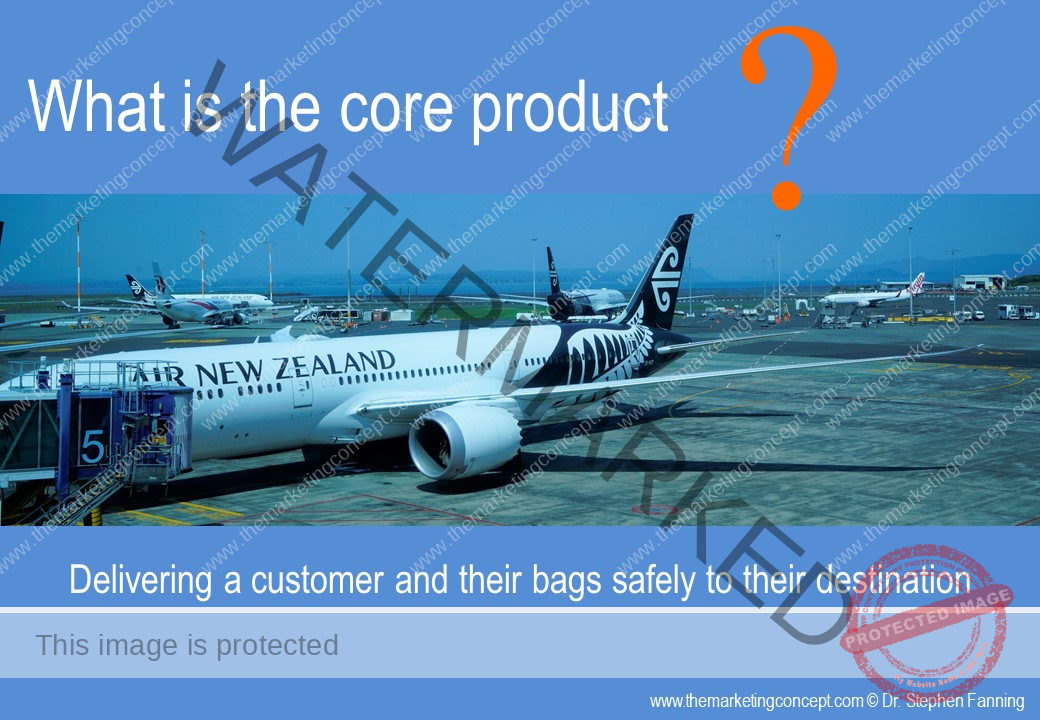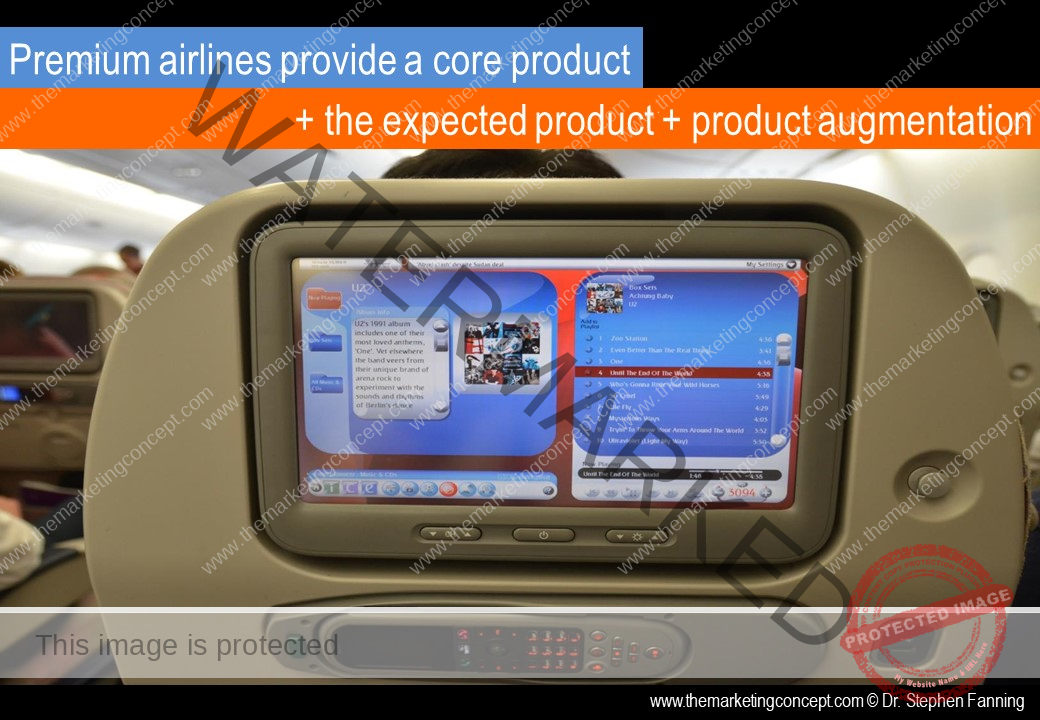
the core product
In his classic article, Levitt (1960) stated most products are built upon a core product. The core product is the basic product – this meets the basic needs of the consumer and nothing more. For example, the core product of an airline is to get passengers and their possessions safely to their destination within an acceptable time. The core product is the minimum product that would include a product in a product category.
Although the core product is the basic product [i.e., the minimum product that meets the customer’s needs] it may not necessarily meet the customer’s wants]. Kano (1995), in his frequently cited article refers to the core product as the ‘basic qualities of a product’; he highlights that basic qualities are central to a product. His research suggests that failing to deliver the core product will lead to high levels of dissatisfaction. Furthermore, although delivery of the core product may avoid dissatisfaction it is unlikely to result in customer satisfaction.
the expected product
However, most customers want and expect more than the basic qualities of the core product. The product that the customer expects is often referred to as the expected product. The expected product is the industry standard product at a particular price point – what most products deliver in a product category at a particular price point. For example, the expected product of budget airlines Ryanair and Easyjet is similar – the expected product of premium airlines Emirates, Qantas, and Singapore Airlines is similar, however, the expected product of Ryanair and Singapore Airlines is quite different.
the augmented product
Delivery of the core product and the expected product layers may avoid customer dissatisfaction, and result in what could be referred to as customer ambivalence – customers who are neutral, neither dissatisfied or satisfied. The next product layer the augmented product layer is therefore important to marketing practitioners. Many organisations provide more than just what is expected: more than the industry standard; they augment their product with product qualities that are attractive to the target market. This layer is called the augmented product [some textbooks refer to this as the supplementary product]. Providing attractive product qualities enables the marketing practitioner to position a product from the product offerings of competitors [e.g., Singapore Airlines who augment their product through their inflight cabin staff – “Singapore girl – a great way to fly”]. Kano (1995) refers to the augmented product qualities as ‘attractive qualities’ he states that often they are unexpected and initially they can lead to high levels of customer delight. However, sustaining delight is difficult and over time attractive qualities can become expected, however, they are qualities that customers are unwilling to risk losing by choosing an alternative product.
We can conclude that different product layers, core, expected, and augmented, influence the buyer decision process and n time customer satisfaction.
the potential product layer
It is easy to forget that marketing is about best satisfying products. Therefore, marketing practitioners are continually focused on the future and what products they need to design and develop. Sometimes the potential product is a major leap forward, however, often it is a continual process of small step improvements. Whilst the potential product is important to the organisation it is often out of sight and out of mind of the consumer. The design and development of a potential product is the preliminary stage of the product life cycle.
